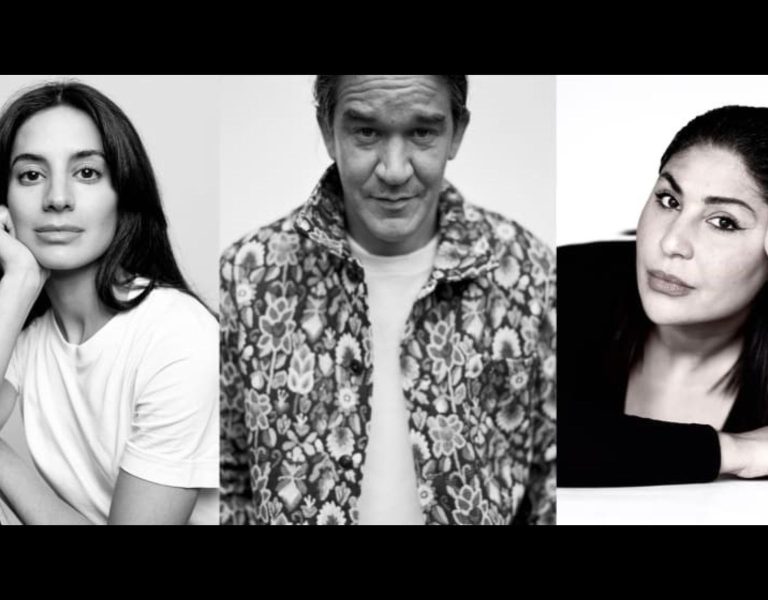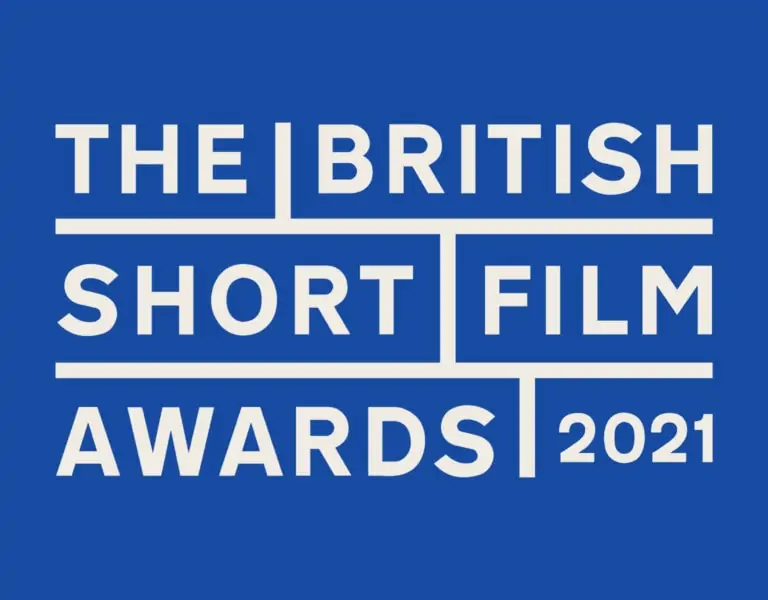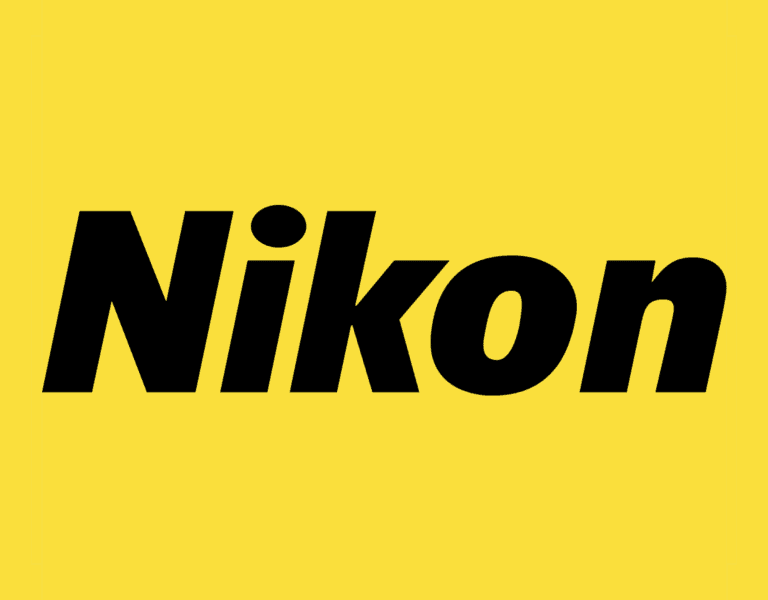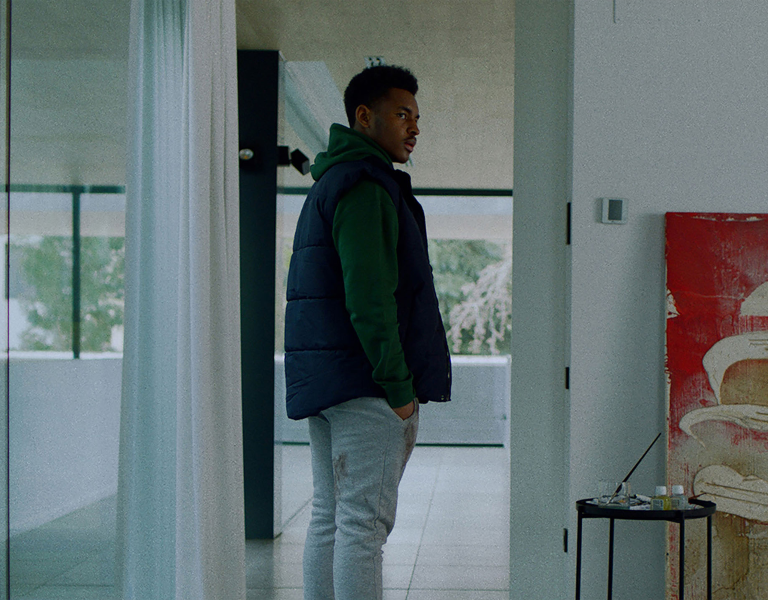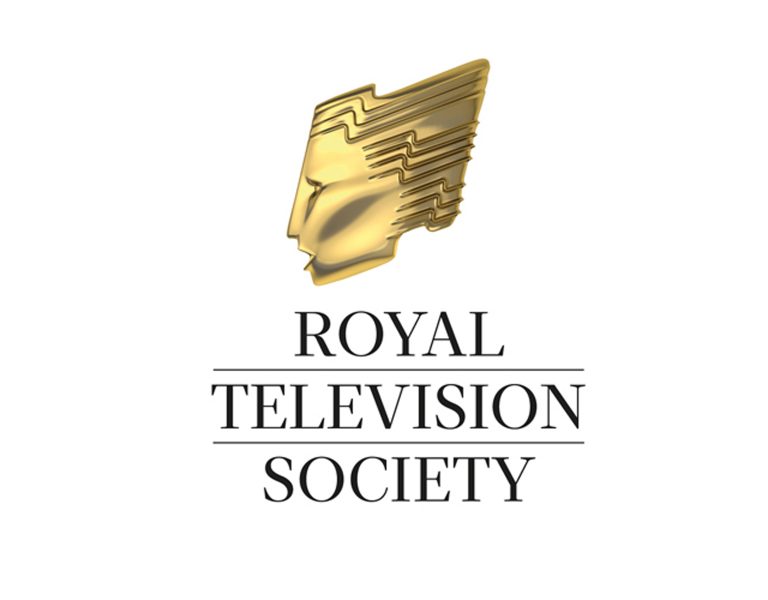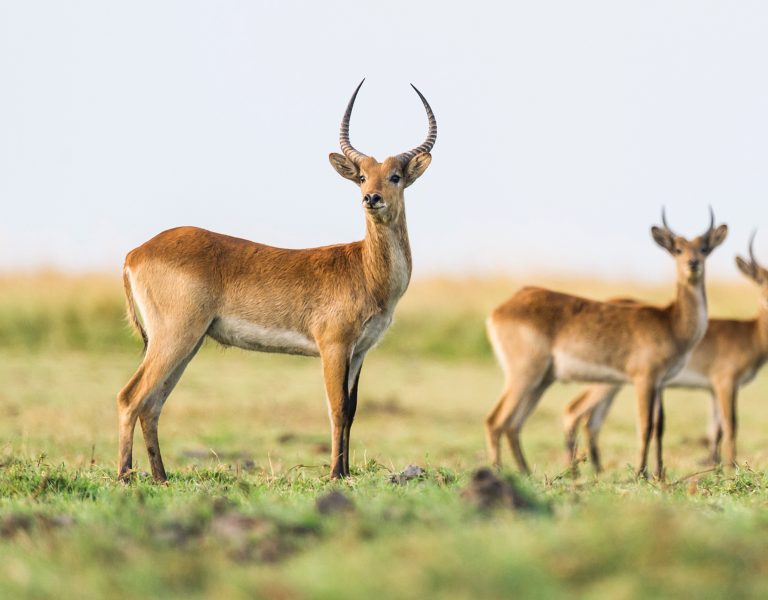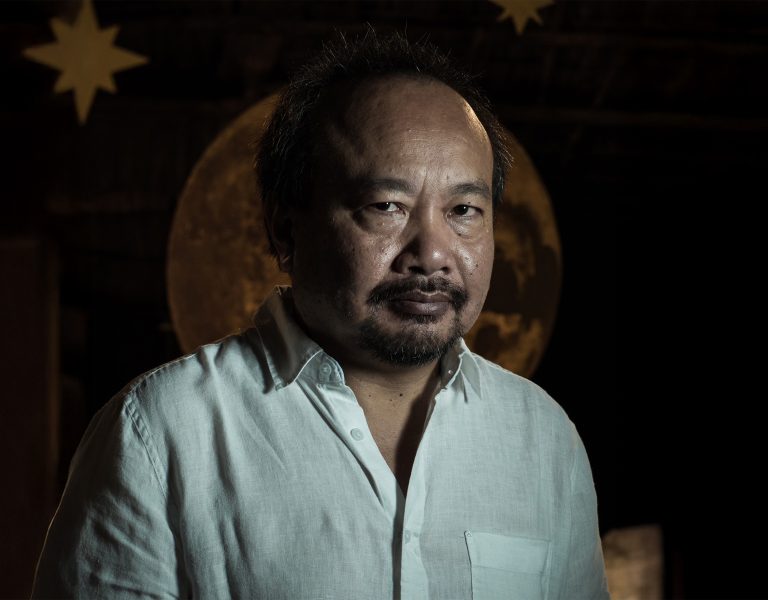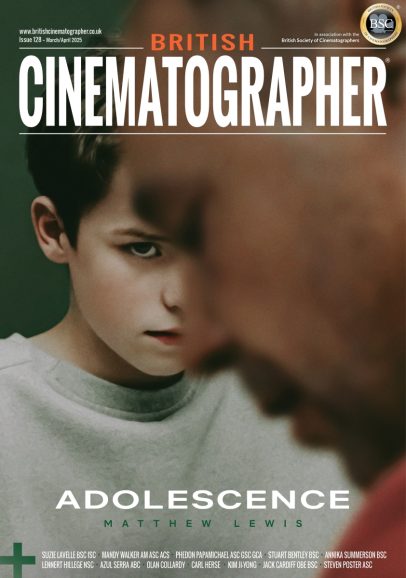
Q: What was the short film, and what was the award?
“The winning film was: Scarlet Silence and the award was Best Thriller at London Global Film Awards. It’s great to receive an award like this because it’s a proof that the director’s vision is recognised by the industry professionals. As a cinematographer, you have a responsibility to deliver what the director is after. I was pleased to be able to develop this thrilling project with the director Zen Nguyen and help her achieve that look to complement the story visually.
The festival run has just started. So far, the film has also been selected by Budapest Movie Awards. Stockholm Short Festival and Toronto International Nollywood Film Festival -an approved Academy of Canadian Cinema & Television Qualifying Film Festival.”
Q: What is the story of the film?
“Up and coming painter Harvey works on his newest exhibit piece surrounded by the company of his girlfriend Mimi and the art critic Zoe, and things start to ruminate around love and jealousy. There are three characters in the film, the painter, Harvey, his girlfriend, Mimi, and the art critic, Zoe. However, Mimi and Zoe are lovers, and Zoe and Harvey are also lovers!”
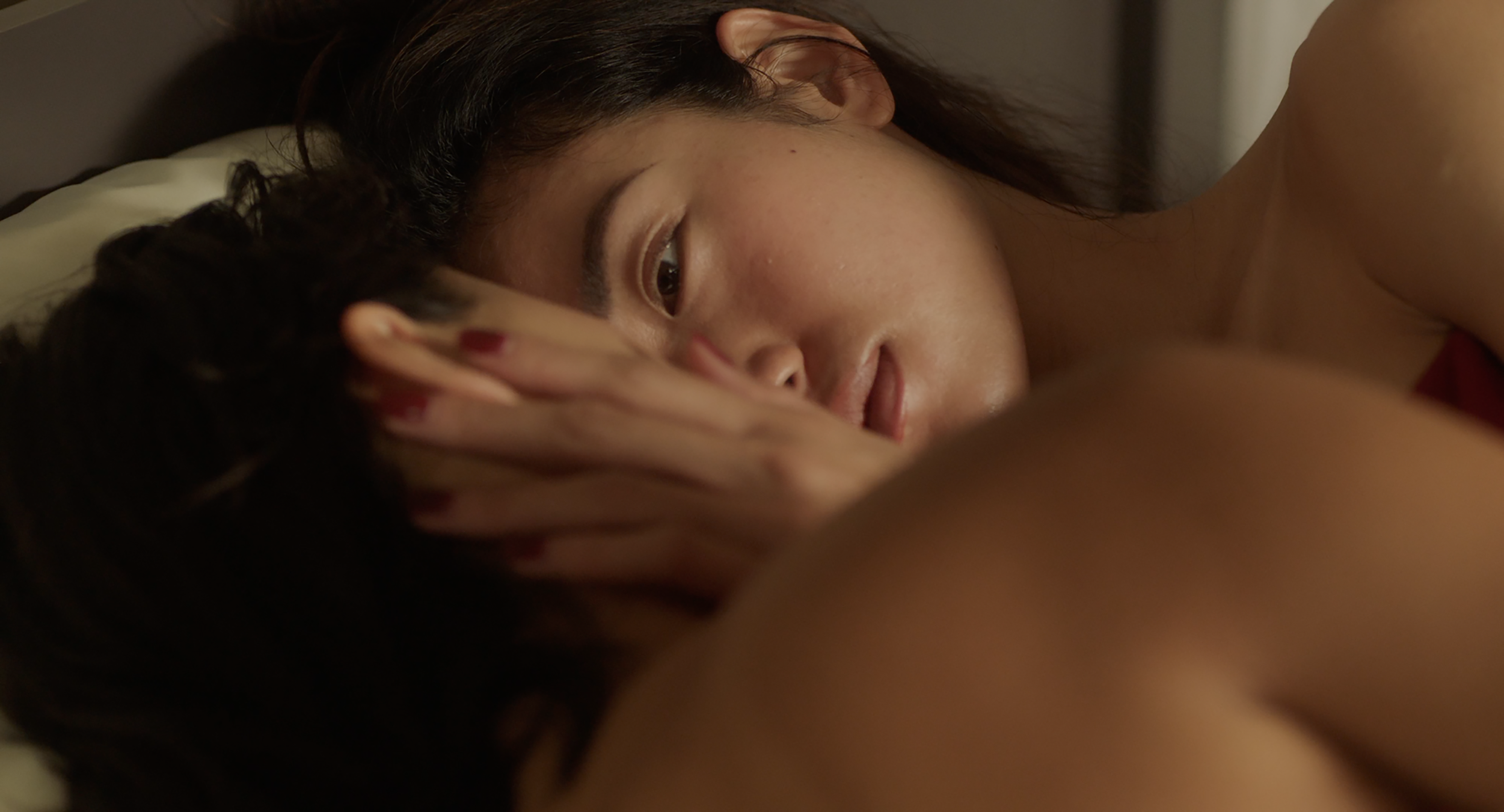
Q: How did the film come to be made?
“The director Zen approached me for her Masters Graduation film at MetFilm School but it was intended to be a teaser for a feature version. The film revolves around art and she looked for a DoP with an interest in art. She read my bio that I originally wanted to be a painter so she thought I would be a good fit for the project.
Zen showed me an early draft of the script. It was the kind of story I like, complex human relationships about life, love and creativity. I was impressed by her detailed creative vision and I saw a potential in the film, so I got on board.
We had about two months to prepare. We had a great location which would accommodate all our scenes in one place, so we did an initial recce fairly earlier on and we developed the project over the months remotely until just before the shoot, when we discussed shots in situ.”
Q: Had you worked with any of the crew before?
“I only knew two people, whom I brought in to the production, the gaffer and DIT. The focus puller was someone who works in the kit room in the MetFilm School. 2nd AC and a spark were people who are starting out and wanted to gain more experience. They applied for the positions in the ad.”
Q: What about kit decisions?
“Both Zen and I wanted the best and highest recording format we could afford. We decided to shoot on ARRI RAW so I wanted to make sure our assets were looked after by someone who knew what they were doing. I wanted sharp optics for this story partly because Zen wanted the ‘clear’ look but also to show off the beautiful location and to reveal the characters’ intricate emotions with naturalistic pleasing pallet. My ideal camera-lens combination would have been ALEX Mini LF with Leitz Thalia. For a low budget short film, we were very happy to settle with ALEXA Mini with Leitz SUMMICRON-C. It turned out that Portrait of a Lady on Fire, which was one of our reference films was shot on Thalia. I thought we were on the right track with our choice.
Regarding the lighting, I called for a help from my cameraman friend, Craig Jones, who has a lot of lighting gear and asked if he would act as my gaffer with his gear. I had met him on a job previously, and he had mentioned about an interesting reflective lighting system, which I haven’t heard of and was different to CRLS by Lightbridge. I thought this would be perfect for this shoot. Luckily he agreed to do it. He hadn’t used it much himself and he was also interested in trying out on a shoot.”
Q: Tell us about the look of the film that you were going for.
“Zen wanted ‘soft, light and clear look as in Portrait of a Lady on Fire’. This was particularly for the female intimate scenes and possibly the night scene.
The other visual reference was The Handmaiden. This was a film that kept popping up in my head, while we were developing the film. It was a film that Zen had in mind as well but it was used as a reference for the music originally. Zen came to think that a slightly stronger contrast but still clean look would add more suspense to the film as a thriller. It confirmed that I was on the same page as Zen.
The film contains an intimate scene between two female characters, and Zen organised an intimacy coordinator to help her construct this scene with sensitivity. When Zen described the scene to me, I wanted it to be classy rather than erotic, and it jolted my memory of some striking imagery that I had seen in the past but forgotten; a clip once a music lecturer showed us in our class, which was Venus on Ken Russell’s View of The Planets (originally broadcast on South Bank Show in 80’s). It showed several female bodies intertwined without being obvious to which part of the body they are and then dissolved seamlessly into curvatures of sand dune. I felt that the combination of such beautiful imagery and the emotive ‘cinematic’ music from Holst’s The Planet felt very powerful as a young person. Zen was on-board with the idea and that was the basis of the bedroom scene.
Additionally, Zen used paintings as a reference for each set up. It was more for the mood and the composition. Edward Munch’s Puberty (1895), Madonna (1895) and Edward Hopper’s Summer Interior(1909) were for the bedroom scene. Edward Munch’s Vampire (1893), The Kiss(1897) and Jealousy (1907) were for the night scene.”

Q: Where was it to be shot?
“Filming in a Grade 1 listed building meant that we had to take a particular care with the location while we were filming. We were not allowed to touch the walls, windows or put any kit directly on to the original vintage floor boards. To move a tripod or a light stand, it required two to three people, because somebody had to make sure the protective sheet was under our kit at all times even for a small move.”
Q: Were you using natural light or were you lighting it yourself or directing the lighting?
“I opted to use mostly KFlect reflective lighting system that the gaffer provided. As with other reflective lighting systems, it allowed us to keep the lighting rig to a minimum, as it negated the need for additional rigs such as flags and diffusion, which turned out to be the best choice for this location due to the restrictions of the Grade I listed building. I used natural light and supplemented it with KFlect.
I have been experimenting with reflective lighting systems, because I love the quality of the light that it produces and it’s an efficient way to light as you can create multiple light sources using multiple different size reflectors with one light.
As with Lightbridge system, you can create required quality of light and the size of light by choosing the right reflector, but KFlect comes with an extensive choice of textured surfaces as well. Each of these surfaces can create a different quality of light and a shape of shadow, which I find very interesting. I thought they would be suitable for the subject of complex inter-twined human relationships and emotions. It’s not just beautiful light that they create but also add interesting ‘character’ to the light.
For the night scene, we had to shoot it during the day due to our budget constraint. We had the window shutters closed and created our own moonlight inside. By the way, we were not allowed to touch the windows ourselves. We had the observers from the museum observing us at all times while we were filming. We asked the observers to close the shutters and they did it for us.”
Q: Did you decide to use optical filters? Please explain why and what filters you used.
“I used two types of Tiffen filters; Pearlescent for the day scenes and Night Fog for the night scenes.
For the day scenes, I wanted a glossy beauty feel to it so Pearlescent was perfect for that and it gave a beautiful glow to the image. At the same time, I was surprised how subtle it was. The halation was minimal and gave just enough bloom.
I chose Night Fog to keep the same strand of beauty for the night scenes but wanted to add some dreaminess to it, as the characters are hallucinated and the story is quite ambiguous whether it really happened or not. Night Fog is one of Tiffen’s new line of diffusion filters, which has an interesting proprieties that is different from their traditional fog filter. It can be used for both day and night but gives different effects depending on when you use it. I think Night Fog slightly mutes the colours and creates a beautiful night look when used for night. I did some tests on Night Fog as well as Black Fog myself but I saw Seamus McGarvey ASC BSC saying that Night Fog is the best type of diffusion he used for Day for Night*. It made me want to use it even more for these scenes.
As we were shooting in the Grade I listed building, we couldn’t use a haze machine. I think Night Fog added a mysterious atmosphere to the scenes.”
Q: Were you involved in any grading?
“Yes. A colourist friend James Wong gave us a helping hand to finish the film. Because the film was about art and art work, I wanted to make sure we get those green hues of the painting and the location. I think James brought the naturalistic beautiful mood to the film. I always try to attend a grading session whenever possible. With Digital particularly, I feel our job as a DP is not finished until we oversee the grade.”

